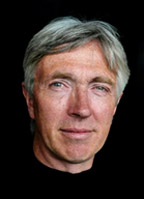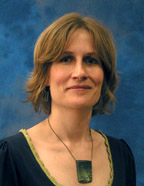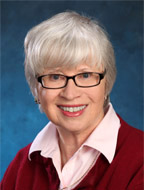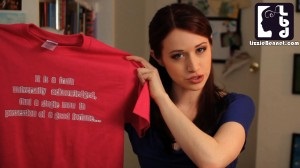Plenary Speakers
John Mullan
Speechless in Pride and Prejudice
Carol Medine Moss Keynote Lecture
Friday, September 27

Published in Persuasions 35 (2013).
“Speechlessness in Pride and Prejudice”
Persuasions 35 (2013): 23-33.
Pride and Prejudice is justly celebrated for its dialogue, but little notice has been taken of how, at key moments, Austen creates suspense or comedy by declining to let her characters speak. This talk-filled novel has dramatic silences at its heart. We will look at the speechlessness of characters who talk without entering the novel’s quoted dialogue, and the very different speechlessness of characters who keep their thoughts to themselves. We will follow Elizabeth learning that it is sometimes hard to speak, and we will try to understand Mr. Darcy’s smiles.
Dr. John Mullan is Professor of English at University College London. He is also a broadcaster and journalist and writes a weekly column on contemporary fiction for The Guardian. He has published widely on eighteenth-century literature, including Sentiment and Sociability: The Language of Feeling in the Eighteenth Century (Oxford University Press, 1988) and Eighteenth-Century Popular Culture: An Anthology (Oxford University Press, 2000), How Novels Work (Oxford University Press, 2006), and Anonymity: A Secret History of English Literature (Faber and Faber, 2007). His latest book, What Matters in Jane Austen, 20 Crucial Puzzles Solved, had its U.S. release in January.
Janine Barchas
Naming Names in Pride and Prejudice
JASNA North American Scholar Lecture
Saturday, September 28

Published in Persuasions 35 (2013).
“How Celebrity Name-Dropping Leads to Another Model for Pemberley”
Persuasions 35 (2013): 75-94.
Austen may slyly allude to famous people and places through the leading names and settings of her fiction. The invented Fitzwilliam Darcy—son of a Mr. Darcy and nephew to an Earl Fitzwilliam—amalgamates two glamorous surnames found in one of England’s most high-profile political families. In 1813, there was only one earl in all of Britain whose surname was Fitzwilliam—and his ancestors were “the Lords D’Arcy of the North.” The real Fitzwilliam clan lived in the grandest house in all of England set in landscaped grounds that contemporaries described as “the finest” ever seen. Restoring the history of the names that Austen selects in Pride and Prejudice allows us to see her characters in the glow of their original celebrity culture.
Dr. Janine Barchas, Professor of English, teaches Jane Austen in Austin at the University of Texas. Her book Graphic Design, Print Culture and the Eighteenth-Century Novel (Cambridge University Press, 2003) won the SHARP prize for best work in the field of book history. Her latest book, Matters of Fact in Jane Austen: History, Location, and Celebrity (John Hopkins University Press, 2012), has just been released in paperback. Dr. Barchas has presented lectures at past AGMs, and her articles on Austen have appeared in the New York Times, Nineteenth-Century Literature, Review of English Studies, Persuasions, and Eighteenth-Century Life.
Dr. Barchas has a new website, What Jane Saw, that is an e-gallery of the exhibition of paintings by Sir Joshua Reynolds that were displayed at the British Institution in Pall Mall in May through August, 1813. This exhibit was visited by Jane Austen and mentioned in her May 24, 1813 letter to Cassandra. She wrote she was “very well pleased . . . with a small portrait of Mrs Bingley, excessively like her” in the Exhibition in Spring Gardens, but that she has not yet found “one of her Sister . . . Mrs Darcy.”
Joan Klingel Ray
Do Elizabeth and Darcy Really Improve “upon acquaintance”?
Saturday, September 28

Published in Persuasions 35 (2013).
“Do Elizabeth and Darcy Really Improve “on acquaintance”?”
Persuasions 35 (2013): 34-49.
When Elizabeth Bennet tells Wickham that Darcy “improves upon acquaintance,” we readers surely know what she means. But, many commentators on the novel, including scholars, still misunderstand Darcy. In fact, Darcy is a much better man throughout the novel than Elizabeth and her readers recognize. After absorbing Darcy’s letter, Elizabeth frankly admits “Till this moment, I never knew myself.” She has a lot more to learn about herself.
Dr. Ray is Professor Emerita of English and lifetime President’s Teaching Scholar at the University of Colorado at Colorado Springs. She served as JASNA President for three terms (2000-2006), and is now President of the North American Friends of Chawton House Library. Joan’s publications range from scholarly articles on Jane Austen, Samuel Johnson, George Herbert and others to the two-volume Dictionary of Literary Biography of Jane Austen, the first British or American author who will have two volumes in this 360+ volume reference series. Joan shows her lighter side in the popular trade book Jane Austen for Dummies (Wiley, 2006), which provides the cultural background that Austen would have expected her contemporary readers to know.
Dr. Ray’s appearance is funded in part by a grant made in memory of Joän Pawelski, former Editor of JASNA News.
Lizzie Bennet Diaries Panel
Sunday, September 29

The Lizzie Bennet Diaries
As many of you already know, the Lizzie Bennet Diaries is an online modern-day adaptation of Pride and Prejudice, presented as a series of episodic video blogs (vlogs) on Youtube. Lizzie Bennet is a 24 year-old grad student with a mountain of student loans trying to figure out what to do with her life. Her “bestie” Charlotte encourages her to start vlogging.
The series, created by Hank Green and Bernie Su, brought Jane Austen to a new medium and a new audience, and we are delighted that members of the LBD crew will join us to talk about this online sensation. If you haven’t watched Lizzie yet, you can view the series online, or soon on DVD.